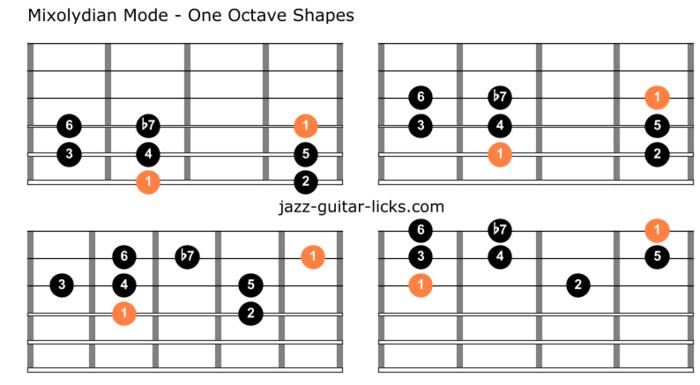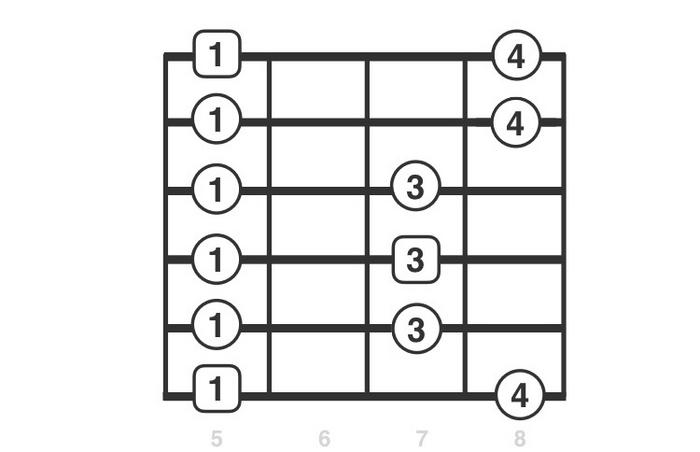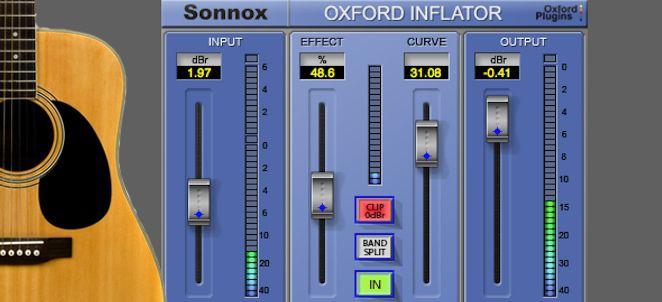Ever wondered what powers the roaring solos of guitar legends like Hendrix, Clapton, or Page? The secret lies in their masterful use of mixing modes within their guitar playing. Indeed, understanding guitar modes can be a game changer in crafting powerful and emotive music as they shape your tonal context.
As a seasoned guitarist and relentless music journalist, I have spent countless hours, unearthing the alchemy behind memorable guitar solos. The key lies in the interplay of modes, expertly woven together, to construct those magical musical moments that enchant us.
Yet, while impressive, this technique remains elusive to many guitar enthusiasts. Countless times in my own explorations, I found myself dumbfounded, grappling with the intricacies of mixing modes. However, the result of that struggle is an understanding deep enough to share with others. That’s exactly what we will explore step-by-step in this guide, turning complex music theory into a wellspring of creative opportunity.
Though seemingly intimidating, mixing modes can offer an exciting new palette for your guitar expressions. So grab your axe, steel your resolve, and strap in for a journey into the extraordinary world of mixed guitar modes.
Understanding Guitar Modes
Mixolydian Mode

Through my extensive work transcribing pieces for renowned music magazines, I’ve come to deeply appreciate the essential role Mixolydian mode plays in the repertoire of many rock legends. This captivating mode, based on the fifth step of the major scale, gives us a dominant 7th tonality that’s been the backbone of many timeless riffs and solos.
It brings a unique, bluesy taste to the music and adds a fresh twist, making it more compelling. I’ve seen firsthand how incorporating the Mixolydian mode can dramatically amplify the depth and vibrancy of a piece, offering a sense of both familiarity and novelty. That’s the magic of the Mixolydian mode, a treasure that is as versatile as it is powerful.
Sharing my personal journey with this prominent mode, it’s clear to me that understanding it robustly can truly revolutionize your guitar playing, opening doors to limitless creative possibilities. So, let’s delve deeper into this classic mode and discover how it can vitalize our musical expression.
Dorian Mode

Moving to our next discussion, let’s delve into the Dorian mode, pivotal in understanding guitar modes. My deep immersion in music theory has helped me appreciate the unique melancholic yet uplifting quality of this mode. Particularly appealing on the guitar, the Dorian mode is utilized frequently in various music genres, contributing significantly to their sonic textures.
The Dorian Mode differs subtly from the natural minor scale due to its raised sixth note, inherently producing a sound that’s both moody and uplifting. This contrasting character provides ample room for musically expressive improvisation—a significant advantage for guitarists. Undoubtedly, the intriguing character of the Dorian mode makes it a favorite mode amongst guitarists, vouching for its detailed study and practice.
Mastering the Dorian Mode will enhance your versatility and breathe new life into your solos. As we move on, we’ll further explore other modes and their unique contributions to your guitar playing.
Aeolian Mode

Following our exploration of the Mixolydian and Dorian Modes, let’s delve into the realm of the Aeolian mode. In my transcription work, I’ve repeatedly experienced the intense emotional depth inherent to the Aeolian mode and I’ve dedicated considerable time incorporating it into my guitar playing practices.
The Aeolian mode, commonly known as the natural minor scale, is an indispensable tool for any musician, given its widespread use across multiple music genres. Its dark, brooding, and melancholic characteristics evoke deep emotions and adds complexity to your guitar playing, enhancing the dimensional depth of your music.
It will transform your understanding of guitar modes, as it introduces a new level of emotive expression that other modes may lack. It’s this expressive quality, I believe, that makes the Aeolian mode a pivotal component on our journey in mastering the art of mixing guitar modes.
Remember, each mode offers a unique tonal palate; moving forward, we’ll explore their application and techniques, starting with the use of Pentatonic scales.
Mixing Modes: Application and Techniques
Using Pentatonic Scales

As we delve deeper into the art of mixing modes, let’s shift our attention to the unsung heroes in this symphony of sounds – pentatonic scales. In my early days of experimenting with modes, pentatonic scales transformed from being just a frame of notes to invaluable tools I could spin into aural magic. In my book ‘Color Your Chords’, I vividly illustrate how pentatonic scales offer a vibrant spectrum of possibilities while playing in modes.
Allow me to give you a glimpse into this colorful toolkit. Think of pentatonic scales as a basecoat, setting the platform for all your creative explorations. Now, when you blend these ‘basecoats’ with the shades of Mixolydian, Dorian, and Aeolian modes, you’re no longer just playing the guitar; you’re painting masterpieces of sound. Using pentatonic scales isn’t just an application technique; it’s a way of reinterpreting the musical canvas, ensuring you never play or hear modes the same way again.
Incorporating Arpeggios

Incorporating arpeggios into mixing modes can unlock a fascinating new dimension in your guitar playing. As practiced in my own journey, arpeggios add a unique depth, facilitating the articulation of modes in fresh, captivating ways. They help in mapping out chord tones, vital for both rhythm and lead guitar, contributing to a more nuanced musical conversation on your fretboard.
When adeptly incorporated into modes, arpeggios frame the harmonic context, highlighting key notes within a chord, thereby enhancing the melodic texture of your solos. This application of arpeggios, refreshing traditional scale-based ideas, infuses your music with a delightful sense of surprise which can truly captivate listeners.
Remember, arpeggios are not just about what you play, but how you play them. Mastery in arpeggios fosters a more profound understanding of your music and the ability to compellingly express your musical perspective. Harness their power to elevate your modal mixing technique and enrich your tonal diversity.
Harmonic Mix Mode Technique

In my journey mastering the art of mixing modes in guitar playing, I’ve often used the harmonic mix mode technique in my own improvisations. As a result of its application, I can affirmatively say it elevates my music’s sophistication and versatility. Harmonic mix mode is more than a theoretical concept; it’s an invaluable tool in any guitarist’s repertoire. It offers a wonderful playground for exploration, allowing you to create compelling musical phrases that can drive or resolve tension.
When effectively utilized, harmonic mix mode contributes to a richer and more dynamic sonic landscape, greatly expanding your musical toolbox. As we navigate the journey of mixing modes, you’ll see how it provides a realm of color, emotion, and complexity to my compositions – a facet missed if I solely relied on pentatonic scales or single-mode structures.
So delve into harmonic mix mode technique, an integral stepping stone in our voyage through the application and techniques of mixing modes.
Practicing Mixing Modes

As we dive further into the captivating world of modes, the art of ‘mixing modes’ steps forth as a crucial element of our expedition. With years of personal practice and teaching under my belt, I can confidently say that mastering this aspect can transform your guitar playing. However, I’ve learned that versatility and creativity are instrumental in one’s practice routines.
Practicing mixing modes is not about mindless repetition, but about exploring diverse musical scenarios where these modes can be applied creatively. It’s about recognizing the distinct tonalities and then experimenting with different blends to create unique, harmonious mixtures. Every mode has a story of its own, and mixing them is a way to weave these stories into beautiful, engaging narratives. My journey through music has constantly been a testament to this liberty of expression, sparked by an understanding of modes and their interplay.
Over time, I found that often the clues to deciphering a song’s mode are hidden in its chord progressions. I’d start by identifying the key, then explore various modes over it, shifting, overlapping, and combining them. This exercise has not just deepened my craft but also reinforced a crucial lesson – theory should aid creativity, not constrain it.
As we move ahead in this article, I urge you to keep this mindset. With every technique and application we’ll discuss, remember that ideas are originates from freedom, not just rules. Allow mixing modes to become a second-nature part of your guitar vocabulary, a tool that you use to shape musical narratives, not merely a concept to memorize and recall.
FAQs
What are guitar modes?
Why are modes important for mastering the art of guitar playing?
How to practice modes on the guitar?
What are some tips for mastering modes on the guitar?
Conclusion
The journey to mastering mixing modes on the guitar opens doors to limitless possibilities in your musical expression. In this endeavor, your understanding of guitar modes will evolve, introducing a new world of harmony in your playing, and the real magic lies in efficiently mixing modes. From the Mixolydian to the Aeolian, and through the techniques of pentatonics and arpeggios, we’ve dissected the art of harmonizing guitar modes, and blending them together in your own unique ways. Furthermore, diligently applying these teachings and practicing mixing modes will yield significant progress.
As we conclude this guide, I hope you’re inspired and excited to explore and create your unique soundscape with guitar modes. Yes, mastering this art demands time and dedication. But as the nuances unfold and your fingers skate smoothly across the fretboard, you’ll experience an unmatchable satisfaction. Here’s to expanding creative boundaries, and to a magnificent musical adventure!